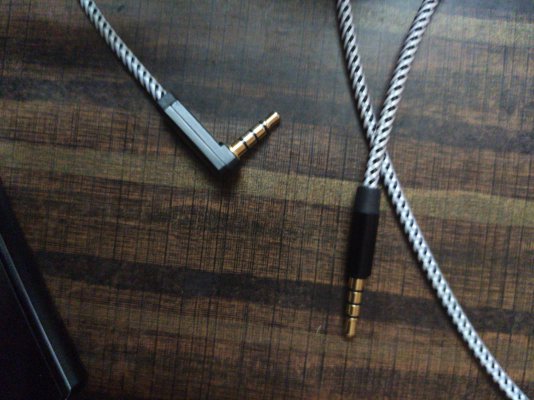fLUX
Galvanizer
I have spent the past few days trying to find an answer. Does using a higher power amp with the same hardware help in better detail retrieval, enhancing the soundstage and instrument separation etc. And from what I have read and discussed at other places, it seems that almost all evidence is anecdotal.
In simpler terms, an amp should have enough power to drive the HP/speaker. Now everyone talks about impedance, whereas the more important factor here is 'Sensitivity/Efficiency' instead. These are the power requirements of a HD650
View attachment 110178
As you can see these are next to nothing and any cheap amp has enough power to drive them easily. This is because despite having an impedance of 300 ohm, they also have an efficiency of 103dB at 1V.
Now, see the power requirements for a 50 ohm Hifiman HE-6. It needs a lot more power to be driven properly because of it's low efficiency of 83.5dB and that is why Hifiman recommends to pair them with their EF6 Amplifier which can serve 5W per channel which is in the territory of Speaker amps.
View attachment 110179
So basically, my question is, why do some people design and others buy amps which are very clearly overpowering and are not needed for a specific hardware. Same thing is for DACs. The spec to judge a DAC by is SNR. And even small dongles are exemplary in that regard including the very capable Apple dongle as so many of us have found out.
So why this mad rush to design and buy stuff that is clearly not needed. I can understand the need of better power supply designs to provide cleaner power but all the marketing hype is always about amp power or some other thing which really doesn't matter and most people have nothing but 'placebo' due to the expensive hardware they just bought.
I would love to be taught more about these things from fellow learned members.
Edit - This question and discussion arose because I find that I prefer listening to my HD650s at comparably higher volumes as I find that the details and instrument separation aren't that good at lower volumes. People talk about using higher powered amps for better SQ at low volumes, but there is no science to support it at all. In my case, I think it is my hearing and my forever clogged nose and ears which might be ultimately responsible for me having to use higher volumes.
While all the science is great, most of us enjoy gears which don't necessarily measure the best and have some amount of harmonic distortion. Today many amp manufacturers in the quest of SINAD make amps which measure really well, but don't sound even a single bit good musically. While measurements do help us understand the science whether you like the sound or not can be judged only post an audition. This topic of science vs subjective audio has been discussed to death so to each his own , but based on actual experience myself and also feedback from many seasoned members I can say that a very good measuring amp does not equal very good sound output.
Coming to the point of driving the headphones, you are right that its not impedance alone but the sensitivity which matters to understand how easy a headphone is to drive. As you mentioned when pairing a headphone with an amplifier it is not just the power but also.the synergy. I had a matrix M-Stage HPA-3B amp which did almost 3.8wpc , could drive majority of the headphones with ease but the HD6x0 sounded dry and lifeless. When I upgraded to a different SS the synergy was much better and the SQ also went up a notch or two. As you move higher up the chain till a particular price point for amplifiers and DACs, there will be an improvement in department of soundstage/ treble details/mids / instrument separation and the improvements will be miniscule higher you go in the price. The HD600 scale tremendously as you go higher up the chain and can take on headphones many times it's price and hence the recommendation to pair it with a good well built amplifier ( OTL in most cases) . I have tried the HD600 across amplifiers of various price ranges and can attest to the fact that they behave differently with various amps and its certainly not attributed to power reserve since they run at 1/4th of the dial with a 200 mw tube OTL. Also the lower volume listening with a better amplifier is not based purely on the aspect of more power, but is more dependent on transducer I feel. A headphone which needs higher amount of power will not ideally suit low volume listening regardless of the amplifier. I like to listen to HD600 on low /medium volumes as opposed to the Hifiman Ananda, Ananda sound much better at higher spl levels despite being relatively easier to drive compared to old gen planars
Finally to give my view on power reserve, the most important reason to have reserve power is to support the dynamic swings of power required in certain passages ( not sure how much of importance it holds in headphones as opposed to speakers), this results in better dynamics , much better lows and eventually making you feel the soundstage and presentation also has improved for the better. Secondly the amplifier should not be over driven or driven to near edge limits which can result in either a blown amplifier or in majority of the cases a shorter lifespan ( hardly happens for headphones as you will screw your ears before that happens).





 ). What a brilliant, well-written piece. Thanks for sharing!
). What a brilliant, well-written piece. Thanks for sharing!

